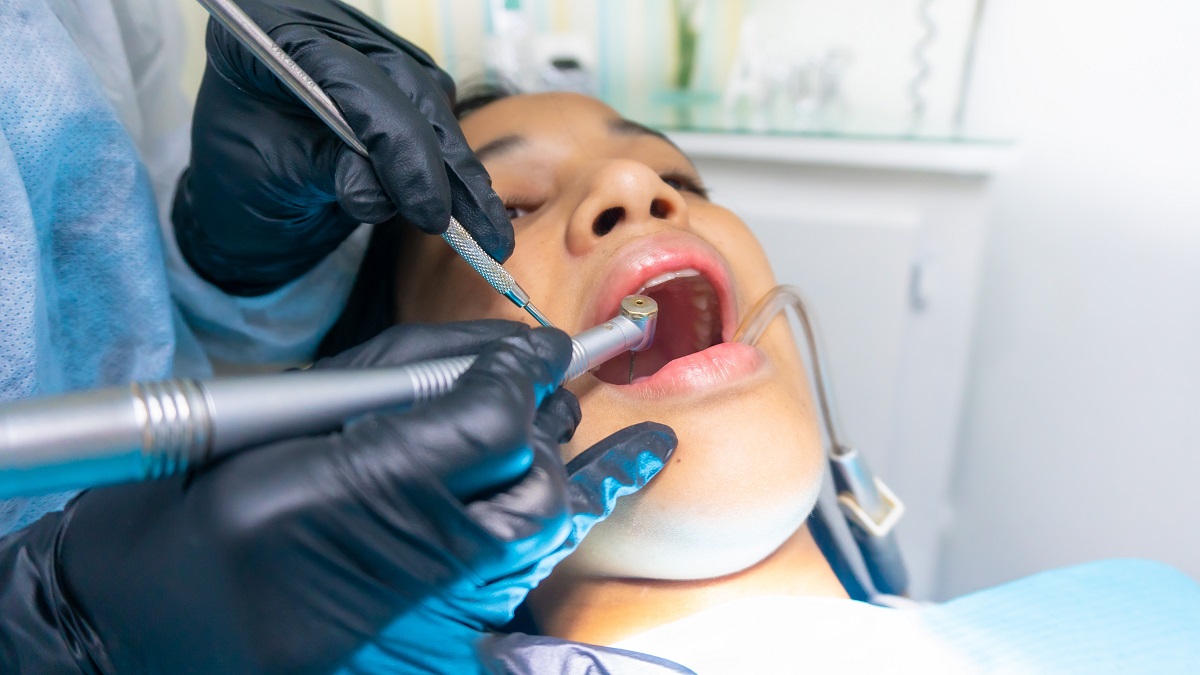By Dr. Valerie Pereira
Picture a dentist, torch, and mouth mirror in hand, locating the sign that would lead him to suspect a certain disease. You ask why?
The mouth is the “window” to the body and an area where the systemic disease first presents itself. Its various parts like lips, tongue, gums, mucosal membranes, teeth, and bone can be compared to objects where we look for clues of disease. And it was Sherlock Holmes who taught us not just to see but to observe details.
This article will focus on a few common manifestations that can be signs of an underlying disease that a dentist may notice in the mouth during a routine dental check-up.
Nutritional Deficiencies
Vitamin A Deficiency
Vitamin A is a fat-soluble vitamin whose deficiency causes night blindness, infections, and skin problems. An interesting sign that’s observed in the teeth of people who are Vitamin A deficient is a problem in the dentin and enamel called enamel hypoplasia which leaves the tooth target to caries.
Vitamin D and Calcium Deficiency
Vitamin D and Calcium affect teeth and bone development, so an absence of these can lead to teeth brittleness (hypocalcified teeth), delayed eruption, and misaligned teeth.
Vitamin K Deficiency
This manifests as increased bleeding or spontaneous bleeding from the gums.
Vitamin B Complex Deficiency
Patients with decreased Vitamin B complex (Riboflavin, Niacin, Cobalamin) manifest with periodontal issues, burning tongue, pale lips, cracks on lip edges, loss of tongue papillae, ulcers, and sometimes a swollen and/or pale tongue.
Vitamin C Deficiency
Bright red, swollen gums which refuse to heal are a classic sign of being deficient in Vitamin C.
It is essential to diagnose and supplement with food and medicine.
Endocrine Disturbances
Hypopituitarism and Hyperpituitarism
In Hypopituitarism the dental arch is smaller and the tooth crown and roots are smaller too. Hyperpituitarism presents a larger than usual jaw and tooth size. The size of the tongue may be increased too.
Hypothyroidism and Hyperthyroidism
In Hypothyroidism, the deciduous teeth may be retained beyond normal shedding time and the lower jaw may be underdeveloped. On the other hand, early shedding of deciduous teeth and accelerated eruption of permanent teeth may be caused to suspect Hyperthyroidism.
Hyperparathyroidism
Pathologic fractures and cysts in the jaw combined with spacing and sudden drifting of teeth can be due to Hyperparathyroidism.
Insulin deficiency
Diabetes is caused by insulin deficiency or resistance. There are two types –Type 1 and type 2 Diabetes.
Oral manifestations include dry mouth, gingivitis, periodontal disease, coated tongue, oral candidiasis, altered taste, burning mouth, increased tendency for infections, and defective wound healing.
It is mandatory to get these levels of hormones tested and treated by an Endocrinologist.
Haematological Disorders
Anaemia
Different types of Anaemia like Pernicious, Aplastic, and Iron Deficiency Anaemia present with different symptoms like inflamed /swollen tongue, red or purple spots on the mucosa, fissures at the angle of the mouth, pale mucosa, and/or red painful tongue.
Leukaemia
Gingival bleeding, rapid loosening of teeth, and ulceration may be a cause to worry and can be due to Leukemia.
Platelet and Clotting Factors disorders
These will present as spontaneous gingival bleeding mostly. A simple blood test can confirm this diagnosis.
Infections
Viral and bacterial infections like Tuberculosis, Leprosy, Syphilis, etc can be diagnosed by blisters, ulcerative lesions and masses in the mouth, and swollen lymph nodes.
Oral Candidiasis where the mouth is covered in white patches and/or white thick coating can be a presenting sign of HIV infection.
Metal Intoxication
Exposure to or ingestion of heavy metals will cause metal poisoning and lead to pigmentation of the oral mucosa.
Bismuth intoxication is associated with the formation of a blue-black line at the edge of the gums.
Lead poisoning or Plumbism presents as a steel-grey linear area in the gums.
Mercury poisoning displays pronounced salivation, ulceration, and a metallic taste in the mouth. It is imperative that these conditions are treated.
Many other signs like ulcers and grinding of teeth due to stress, periodontal bone loss due to osteoporosis in women, and tooth stains due to smoking can be observed by a dentist. Even signs of cancers, autoimmune diseases, and syndromes are detected in the mouth. Menopause is linked to dryness and/or burning mouth. Erosion on the lingual sides of teeth can be due to Gastroesophageal Reflux Disease (GERD). Bulimia and anorexia nervosa patients may show erosion of teeth due to purging and self-inflicted injuries.
These oral signs can manifest along with or even precede the systemic lesions. Sometimes they may even be the first clinical sign in an undiagnosed patient and they can be caught unaware.
Identification of these signs and symptoms is crucial to come to a timely diagnosis, so as to refer to a physician and be able to treat the disease effectively.
The devil, after all, is in the details.
About the Author:
Dr. Valerie Anithra Pereira is a consultant dentist who specialises in Periodontics (gums). She has completed her BDS from AJ Institute of Dental Sciences, Mangalore. She then practiced at Narayana Hrudayalaya in Bangalore before going on to do her Masters in Periodontics and Implantology (MDS) at Rajiv Gandhi University of Health Sciences in Coorg. She has worked as an Assistant Professor in Periodontology at Bhopal University and Maharashtra University of Health Sciences, Nashik She is available for consultation in Panjim, Goa.
She can be contacted on: 8208007184.


